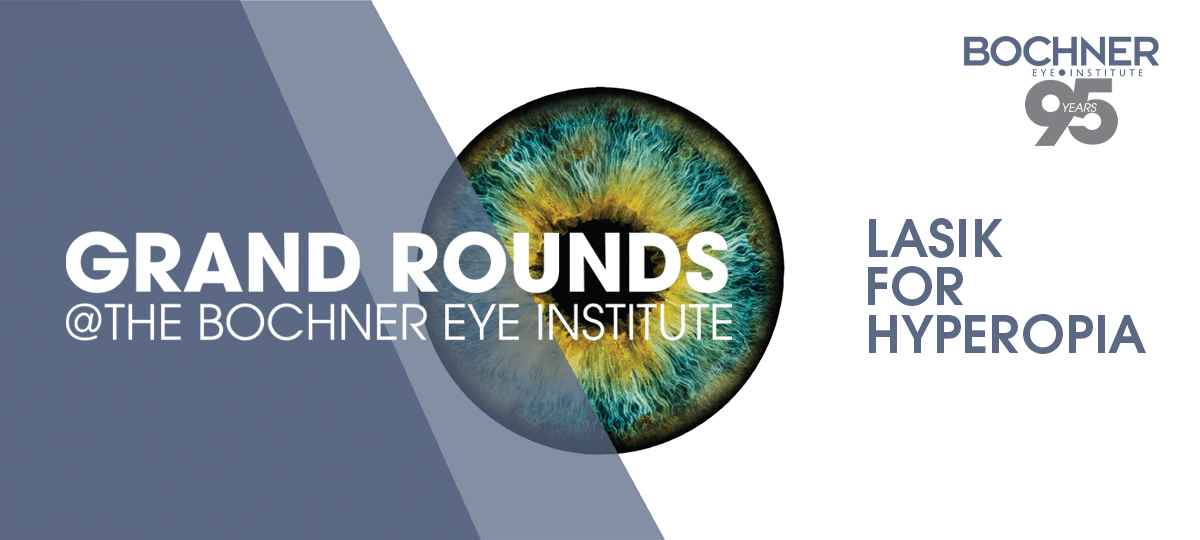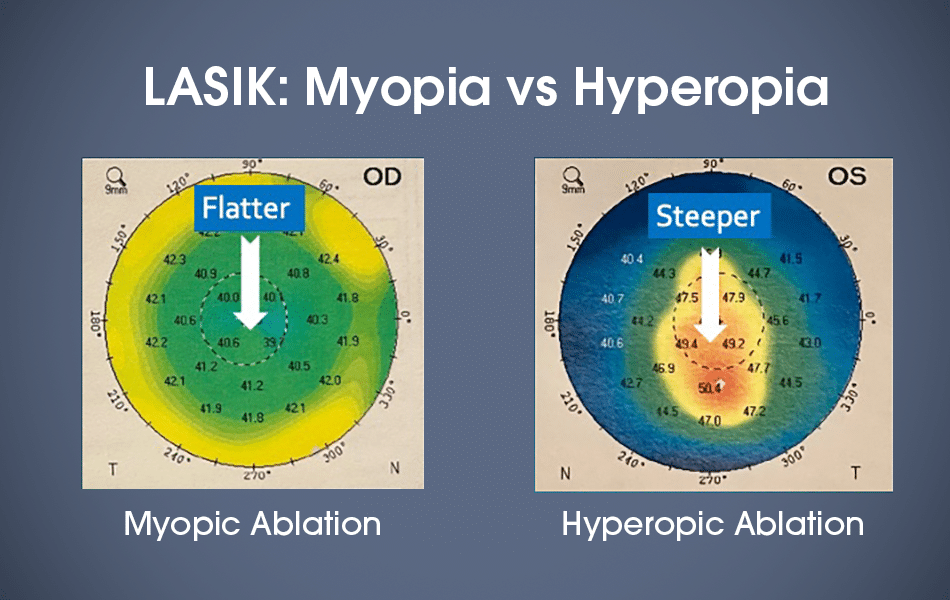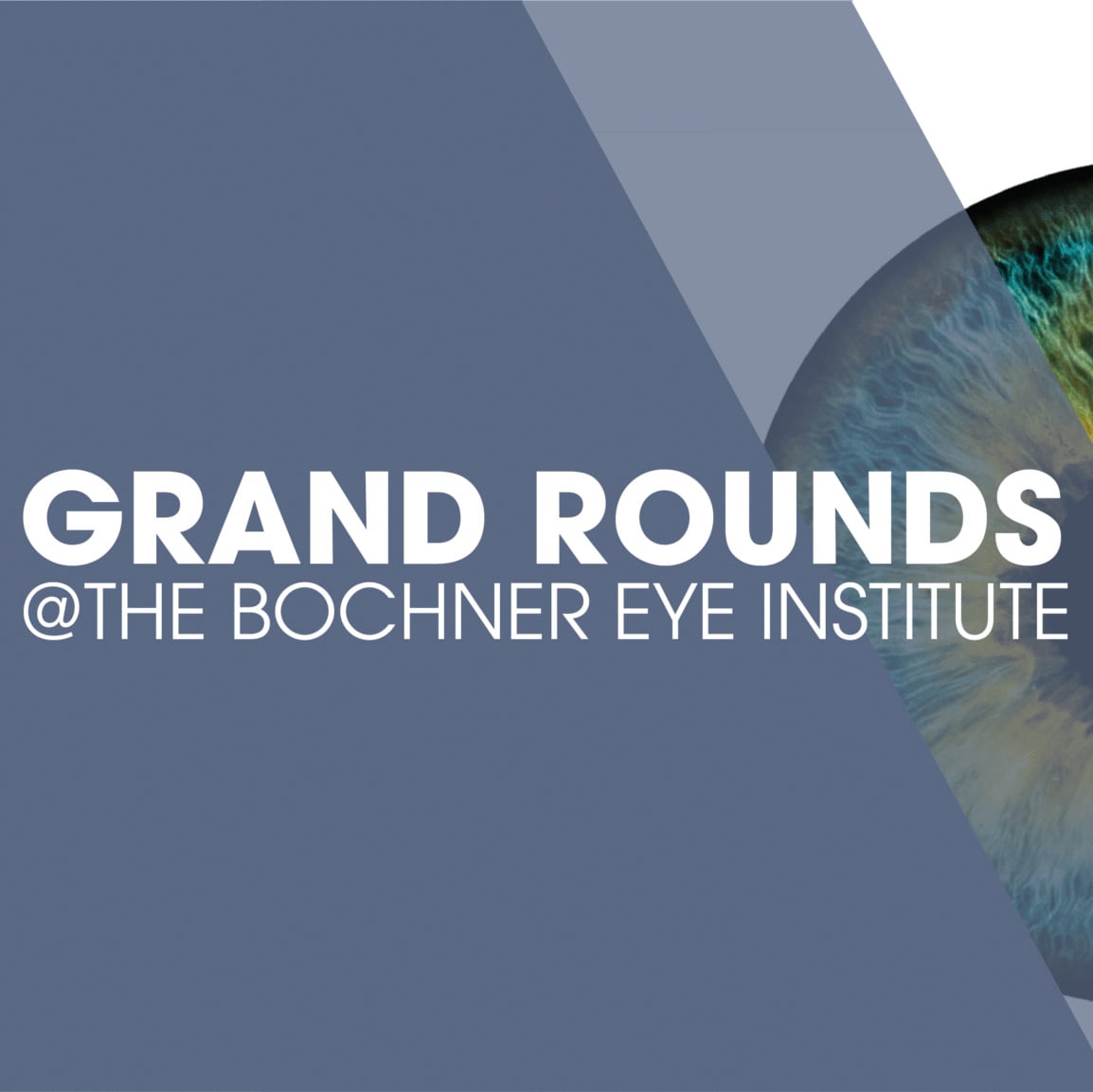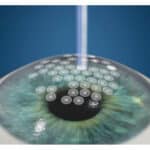
CASE OVERVIEW
A 31-year-old male desired refractive surgery to enhance his uncorrected vision. His preoperative refractive error was:
- RIGHT EYE: +3.50 -1.00 x 75, achieving 20/20
- LEFT EYE: +3.25 -0.75 x 95, achieving 20/20
Slitlamp and fundus examinations were normal.
CORNEAL MEASUREMENTS:
- MINIMUM CORNEAL THICKNESS: Right eye 510 microns, Left eye 533 microns
- MAXIMUM CORNEAL STEEPNESS: Right eye 43 D, Left eye 44 D
- CORNEAL TOPOGRAPHY: No evidence of keratoconus.
PROCEDURE DETAILS:
After a thorough discussion of risks and benefits, the patient opted for LASIK surgery. A 110-micron corneal flap was created using a femtosecond laser. The Allegretto 500 kHz excimer laser was programmed to correct the full refractive error with:
- OPTICAL ZONE: 6.5 mm
- BLEND ZONE: 9.0 mm
The procedure was uneventful, with no intraoperative complications.

POST-OPERATIVE COURSE:
1 WEEK POSTOPERATIVE:
- Uncorrected vision: 20/40 OU
- Residual refractive error: -1.00 D required to achieve 20/20
6 WEEKS POSTOPERATIVE:
- Uncorrected vision: Right eye 20/25, Left eye 20/20
2.5 MONTHS POSTOPERATIVE:
- Uncorrected vision: 20/20 OU
KEY LEARNING POINTS:
1. POSTOPERATIVE RECOVERY:
- Hyperopic LASIK often shows initial myopic overcorrection, which stabilizes over time.
- Final refractive stability may take 4–6 months, and therefore enhancements should be deferred until stability is achieved.
2. REFRACTIVE RANGE:
- LASIK is approved by Health Canada and the FDA for corrections up to +6.00 D; best results are seen with corrections ≤+4.50 D.
- There are significant differences in outcomes with the various excimer lasers today, which accounts for different refractive indications
- Lower corrections result in:
- Reduced regression
- Fewer higher-order aberrations
- Decreased postoperative dryness
3. ALTERNATIVE TREATMENTS FOR HIGH HYPEROPIA:
- Pre-presbyopic patients: Consider implantable contact lenses if anterior chamber depth ≥3.0 mm.
- Presbyopic patients: Refractive lens exchange may provide better results for both distance and near vision.
4. CANDIDATE SELECTION:
- Ideal candidates should achieve postoperative maximum keratometry (K) <50 D, calculated as:
- Postoperative K = Preoperative K + Spherical Equivalent Refractive Error
5. SUPPORTING EVIDENCE:
Clinical Outcomes of Hyperopic LASIK:
(Moshirfar et al., Ophthalmology and Therapy 10 (3), 547-563, 2021)
- Comparison of visual outcome after hyperopic LASIK using a wavefront-optimized platform versus other excimer lasers in the past two decades
- Wavefront-optimized lasers like the Allegretto EX500 achieve superior results.
- At 12 months:
- 96% of eyes achieved a spherical equivalent within ±1.00 D of the target.
- 69% achieved uncorrected vision of 20/20 or better.
Factors Affecting Recovery:
(Safir et al., Journal of Refractive Surgery 40 (1), e42-e47, 2024)
Predictors of slower visual recovery include:
- Younger age
- Higher preoperative spherical equivalence
- Greater ablation depth
- Female patients and those with significant hyperopia are more likely to experience delayed recovery.
CONCLUSION:
Advancements in excimer laser technology, particularly wavefront-optimized systems, have significantly improved the safety, efficacy, and accuracy of hyperopic LASIK. Careful patient selection and counselling are crucial, especially for those with high hyperopia or factors associated with slower visual recovery.



